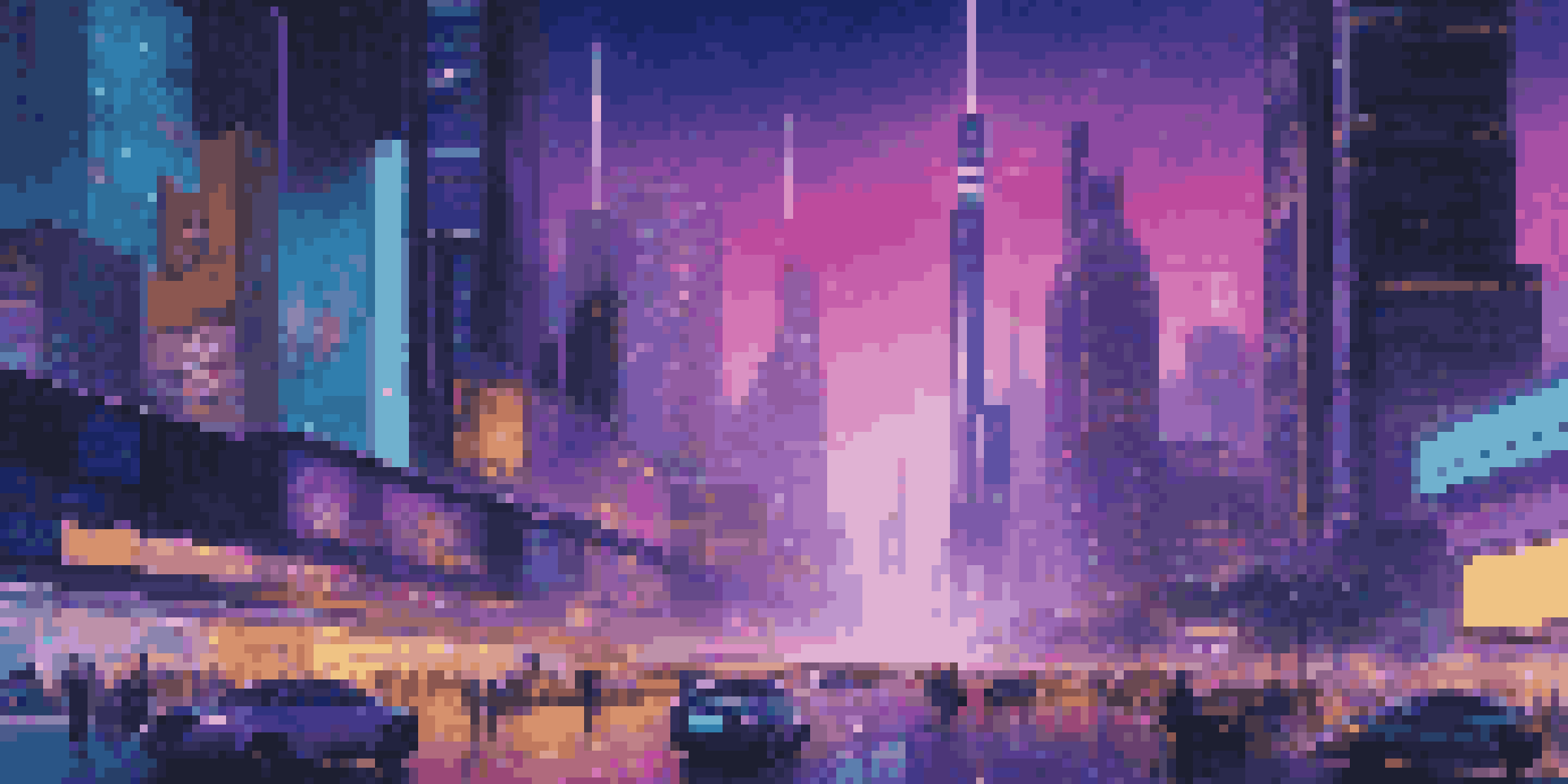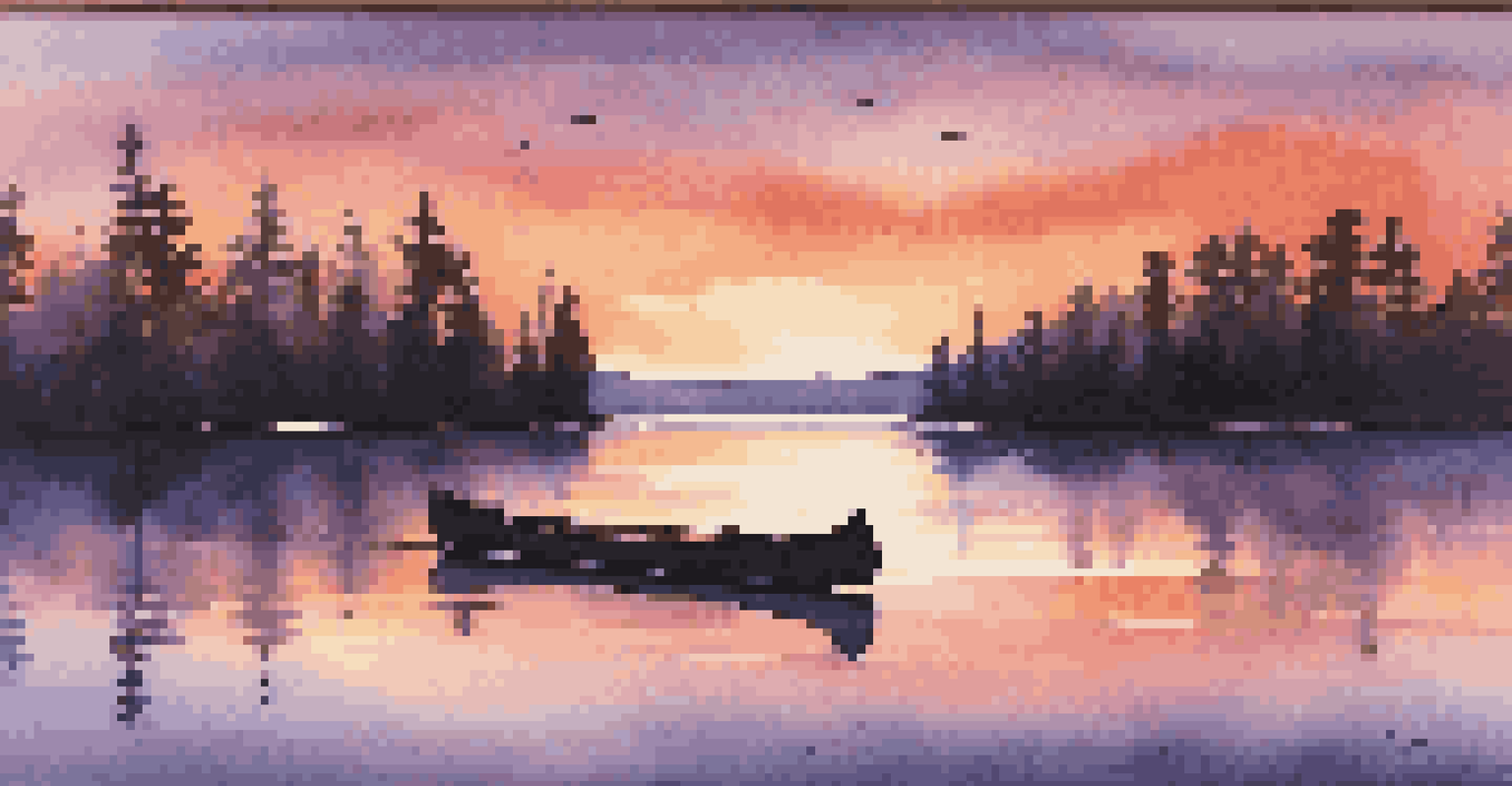Art and Machine Learning: Coding with Neural Networks

Understanding Neural Networks in Art Creation
Neural networks are a subset of machine learning that mimic the way human brains operate. They consist of layers of interconnected nodes, each processing data to recognize patterns and make decisions. In the realm of art, these networks can generate stunning visuals by learning from existing artworks and styles, creating a unique blend of creativity and technology.
Art is not a mirror held up to reality, but a hammer with which to shape it.
For instance, artists can train neural networks with thousands of images, allowing the algorithm to learn the nuances of color, texture, and form. Once trained, the network can create original pieces that reflect the input data but also introduce novel elements. This fusion of art and technology opens a new frontier for both artists and technologists, creating exciting collaboration opportunities.
Moreover, understanding how neural networks function is crucial for artists who want to incorporate this technology into their work. By grasping the basics, they can better manipulate the outcomes and explore the creative possibilities that machine learning presents, leading to innovative art forms that were previously unimaginable.
The Process of Training Neural Networks for Art
Training a neural network involves feeding it a large dataset—this could be thousands or even millions of artwork images. The network learns to recognize patterns and features through a process called supervised learning, where it is guided by labeled data. Over time, the neural network adjusts its internal parameters to minimize errors in its outputs, honing its ability to generate original art.

A popular example of this process is the use of Generative Adversarial Networks (GANs), which consist of two neural networks that work against each other. One network generates images, while the other evaluates them, pushing the generator to create increasingly realistic artworks. This dynamic interaction can lead to the production of breathtaking pieces that blend various styles or even create entirely new aesthetics.
Neural Networks Transform Art Creation
Neural networks allow artists to generate original artworks by learning from existing styles and patterns.
As an artist, being involved in this training process can be incredibly rewarding. It allows for a hands-on approach to understanding how the algorithm interprets artistic concepts, empowering artists to guide the technology in a way that aligns with their creative vision.
Exploring Different Art Styles with Machine Learning
One of the most fascinating aspects of using machine learning in art is the ability to explore and merge different styles. Artists can train neural networks on specific styles, such as Impressionism or Cubism, and then generate new works that incorporate elements of these styles. This capability allows artists to push the boundaries of traditional art forms.
The future is not a gift. It is an achievement.
For example, a painter might use a neural network to create a piece that combines the vibrant color palette of Van Gogh with the abstract forms of Picasso. The result can be a visually striking artwork that pays homage to the masters while also standing on its own as a unique creation. This blending of styles can lead to innovative artistic movements that redefine contemporary art.
Furthermore, this exploration isn't limited to visual arts. Musicians and writers are also beginning to experiment with machine learning algorithms to generate new compositions or narratives. This cross-pollination of art forms exemplifies how machine learning can inspire and transform artistic expression in exciting ways.
Case Studies: Successful Art and Machine Learning Projects
Several artists and researchers have successfully integrated machine learning into their creative processes, showcasing the potential of this blend. One notable example is the project 'The Next Rembrandt,' where a team used deep learning algorithms to analyze Rembrandt's works and create a new painting in his style. This project sparked debates about authorship and originality in art.
Another example is the artist Refik Anadol, who uses machine learning to transform large datasets into captivating visual installations. His work often combines architecture and data visualization, creating immersive experiences that challenge viewers' perceptions of space and art. These projects highlight how machine learning can expand the boundaries of artistic creativity.
Ethical Challenges in AI Art
The rise of machine-generated art raises important questions about ownership, originality, and potential biases in the creative process.
These case studies serve as inspiration for artists looking to explore machine learning in their own work. They illustrate not only the technical possibilities but also the profound questions that arise when art and technology intersect, encouraging deeper reflection on the nature of creativity.
The Ethical Considerations of AI in Art
As the intersection of art and machine learning grows, so do the ethical implications surrounding it. Questions arise about originality, ownership, and the role of the artist in a world where machines can create art. For instance, if a neural network generates a piece based on existing works, who owns that art? Is it the programmer, the artist, or the machine itself?
Moreover, there are concerns about the potential for machine learning to perpetuate biases present in the training data. If an algorithm learns from a dataset that lacks diversity, it may produce artworks that reflect those limitations, potentially marginalizing underrepresented voices in the art community. Addressing these ethical considerations is crucial for the responsible use of technology in the arts.
Ultimately, navigating these challenges requires open dialogue among artists, technologists, and ethicists. By fostering collaboration and discussing the implications of machine-generated art, we can ensure that the integration of technology enriches rather than diminishes the artistic landscape.
Future Trends: Art and Machine Learning
Looking ahead, the fusion of art and machine learning is poised to grow even more significant. Advances in technology, such as improved algorithms and increased computational power, will enable artists to create more intricate and dynamic works. We can expect to see more collaborations between artists and data scientists, leading to innovative projects that challenge conventional artistic boundaries.
Furthermore, as machine learning tools become more accessible, we may witness a democratization of art creation. Artists from diverse backgrounds can leverage these technologies to express their unique voices, resulting in a richer and more varied artistic landscape. This shift could inspire new movements and styles that reflect the complexity of our modern world.
Future of Art with Machine Learning
The integration of machine learning in art is set to expand, enabling diverse voices and innovative projects that redefine artistic boundaries.
Additionally, educational institutions are beginning to embrace machine learning in arts curricula, preparing the next generation of artists to navigate this evolving field. By equipping students with the skills to use these technologies, we can foster a future where art and machine learning coexist harmoniously, driving creativity to new heights.
Getting Started: Tools for Artists in Machine Learning
For artists interested in exploring the world of machine learning, several user-friendly tools and platforms can help you get started. Applications like Runway ML and Artbreeder offer intuitive interfaces that allow artists to experiment with neural networks without needing extensive coding knowledge. These platforms make it easy to generate art, remix existing works, and even collaborate with AI models.
Additionally, many online courses and tutorials focus on teaching the fundamentals of machine learning for artists. Websites like Coursera and Udemy offer programs tailored to creative individuals, guiding them through the basics of coding and how to apply machine learning techniques in their projects. These resources provide valuable knowledge and empower artists to harness technology in their practices.

Starting your journey into machine learning doesn't have to be daunting. With the right tools and resources, artists can embark on an exciting adventure that blends creativity and technology, paving the way for innovative artistic expression.